BACK TO finale_winnerS
Best Design Impact / Best Sustainable Design
KAMEK
As urbanisation kicks in, lost cultures being mended becomes a debatable topic; the dilemma of moving on forward towards a modern world or going back to living in the dark forests. Sarawak is the embodiment of ancient culture which has been recognised by UNESCO. Consisting of a variety of ethnicities, Iban, Bidayuh, Orang Ulu and […]

As urbanisation kicks in, lost cultures being mended becomes a debatable topic; the dilemma of moving on forward towards a modern world or going back to living in the dark forests. Sarawak is the embodiment of ancient culture which has been recognised by UNESCO. Consisting of a variety of ethnicities, Iban, Bidayuh, Orang Ulu and many others, Sarawak has its own identities which represent the multicultural society that set it apart from other cultures. The raging growth of the modern world has become a pillar that overshadows our historical culture that has existed since the dawn of time on our land. As a result, the cultures and practices slowly erode away from the timeline, it has been fully forgotten by the youngsters, loss of identity and negative behavioural changes occurs in the new generation.
Therefore, Kamek cultural art, community and research centre will seek the solution for the native people of Sarawak. Kamek means ‘me’ in Sarawakian language which states that every one of us have our own valuable identities that we need to protect because no one is the same as the others. This project aims to create a place where new generations can redefine their lifestyle and culture of Sarawak people as well as to design opportunities where locals can boost their economics through their skills.
A lot of land situated between Sungai Tabo and Sungai Santubong of Sarawak has been given to develop a new Sarawak cultural centre which will act as nodes for people from Bandar Baru Samariang and Petra Jaya district. The allocated area has potential due to its location surrounded by one of the most multi-racial districts based on its demographic. Plus, the area is famous because it is nearby “Bukit Santubong” and “Kampung Budaya" which attract more tourism activity to this area. The space needs to serve as a cultural centre where native people of Sarawak can showcase their works to the public. Because Sarawak Heritage Society (SHS) mission is to promote the conservation, permanent preservation and sustainable management of Sarawak’s unique cultural heritage assets, both tangible and intangible.
The building consists of three main buildings on slope with stepped floor planning and the building programmes split into 5 main categories: commercial, institutional, hospitality, cultural community, and integrated space. On the ground floor, there is a timber carving display, carved beads totem, floating seating, Baruk house, information corridor and island that accommodate the main stage and the Berambeh Hub ( Cultural Display Area) . There is also a sape studio (Sarawak music instrument) and Baleh (traditional Kitchen in Kayan dialect) integrated in the space. At the first floor, located the Clothing Display booth and a walkway that connects to a Rafflesia Outdoor Exhibition. On the other hand, The integrated area which is the building that is perpendicular to the main building is the BATIK House, consists of ground floor and lower ground floor. On the first floor and ground floor of BATIK house, where most of the batik display area and studio are situated, people can learn how to make batik as well as mat and explore various types of batik and mat.
The design of each space and structure are thoroughly related to a particular cultural element of a specific ethnic. The main design concept is to connect the cultural design elements which will portray the identity of the culture to increase awareness among the public. Examples of design elements that have been derived from a particular culture are the Alut Hub, an interior space where boats can gather to experience the unique design of the atrium, which are inspired from the Iban tattoo "Bunga Terung ''. Iban culture's flower tattoo with a spiral at the middle means new life and can be related back to the purposes of the project, which is to revive the culture into today's generation. The hub is designed with a spiral structure to symbolise the design in the tattoo. In addition, the elevated hut structure where it accommodates multipurpose functions such as tattoo house and dancing class were inspired from the Bidayuh's Baruk house. Baruk house is a traditional typical main hall for the Bidayuh where most activities are centred in that house. The internal waterways inside the building symbolise Sarawak culture who always rely on the river as the main resource.
Cultural diversity is a reflection of people's connection to their local environment, to the living world. Every design element in Kamek is relatable with the culture in Sarawak not just to portray the significance of the culture but also to allow the younger generation to represent our culture in front of the whole world and give all different societies a chance to explore our culture and at the same time strengthen the locals' Identity.
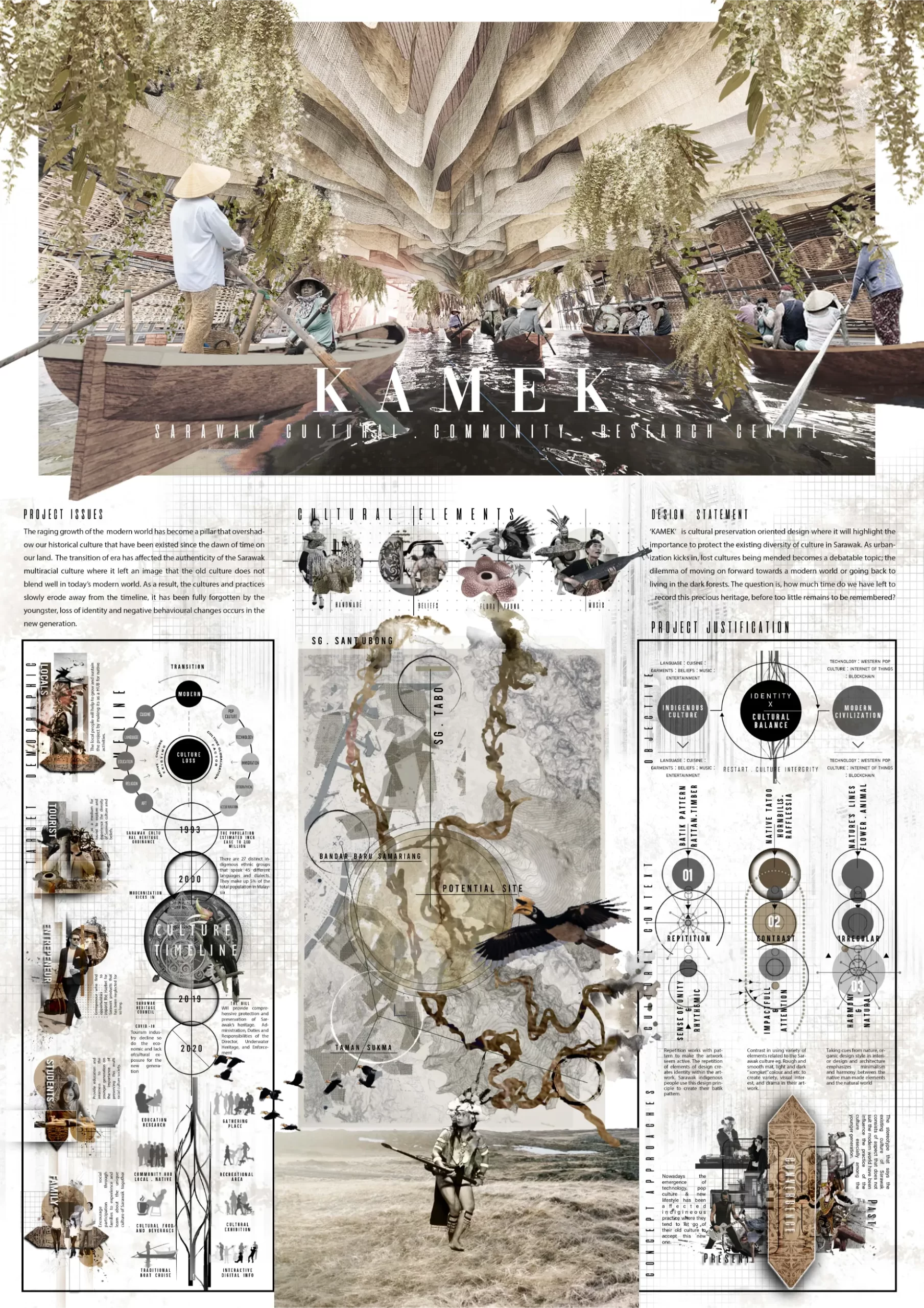




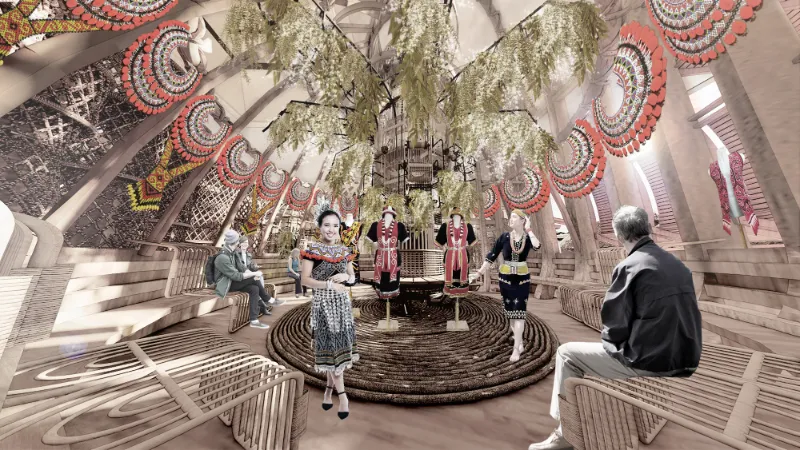




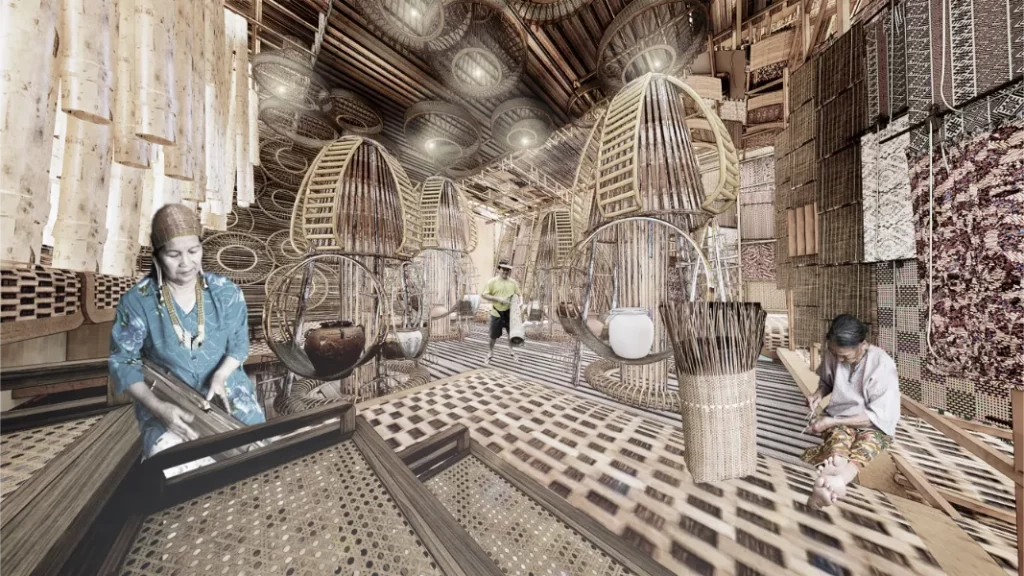


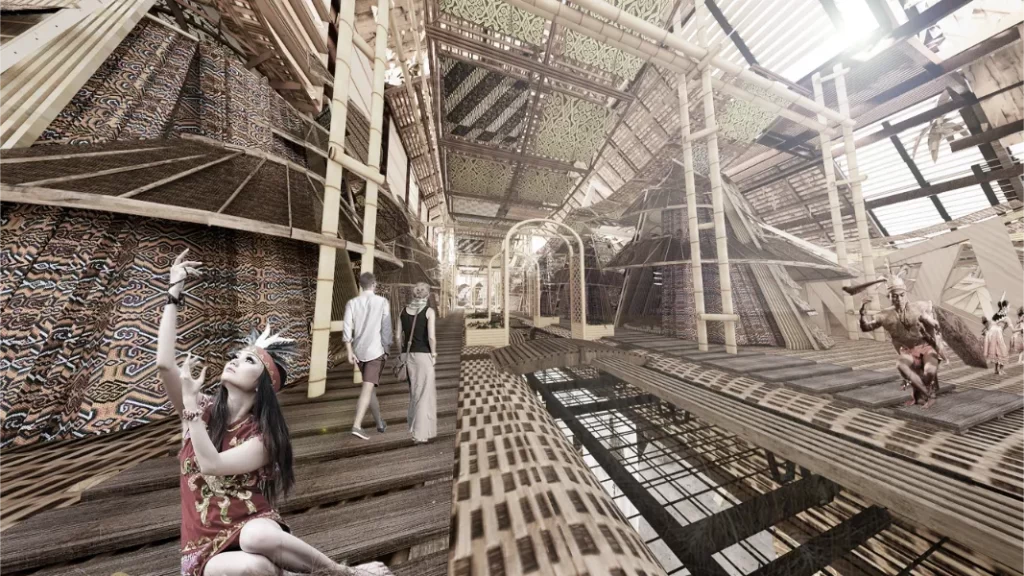

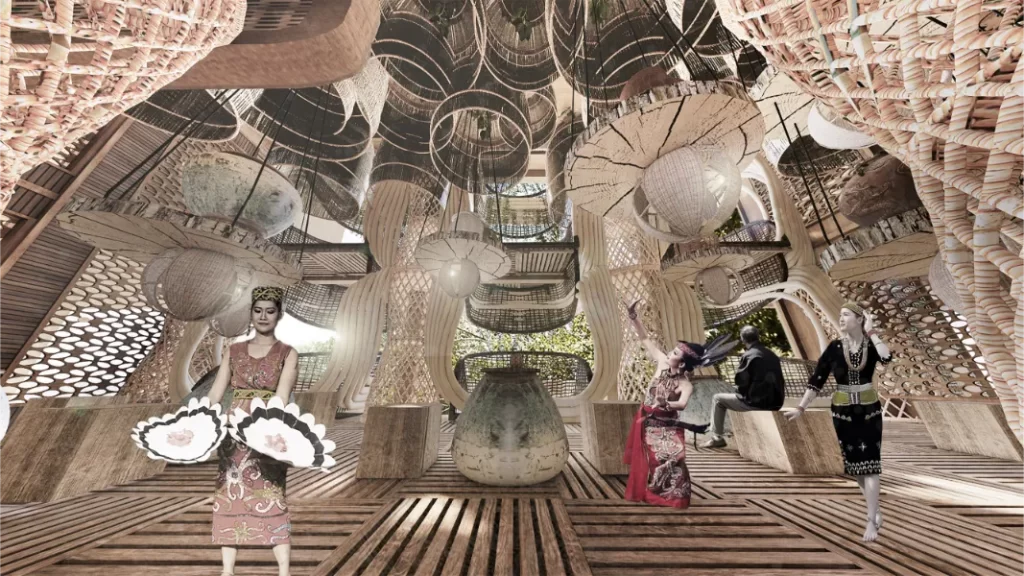
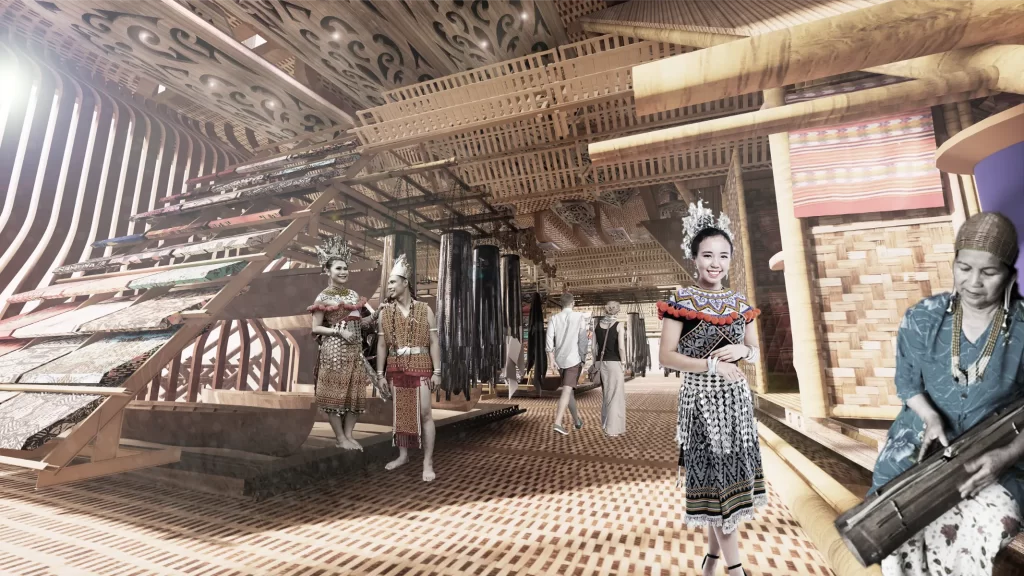



Showcase your design to an international audience
SUBMIT NOW
Image: Agrapolis Urban Permaculture Farm by David Johanes Palar
Top
As urbanisation kicks in, lost cultures being mended becomes a debatable topic; the dilemma of moving on forward towards a modern world or going back to living in the dark forests. Sarawak is the embodiment of ancient culture which has been recognised by UNESCO. Consisting of a variety of ethnicities, Iban, Bidayuh, Orang Ulu and many others, Sarawak has its own identities which represent the multicultural society that set it apart from other cultures. The raging growth of the modern world has become a pillar that overshadows our historical culture that has existed since the dawn of time on our land. As a result, the cultures and practices slowly erode away from the timeline, it has been fully forgotten by the youngsters, loss of identity and negative behavioural changes occurs in the new generation. Therefore, Kamek cultural art, community and research centre will seek the solution for the native people of Sarawak. Kamek means ‘me’ in Sarawakian language which states that every one of us have our own valuable identities that we need to protect because no one is the same as the others. This project aims to create a place where new generations can redefine their lifestyle and culture of Sarawak people as well as to design opportunities where locals can boost their economics through their skills. A lot of land situated between Sungai Tabo and Sungai Santubong of Sarawak has been given to develop a new Sarawak cultural centre which will act as nodes for people from Bandar Baru Samariang and Petra Jaya district. The allocated area has potential due to its location surrounded by one of the most multi-racial districts based on its demographic. Plus, the area is famous because it is nearby “Bukit Santubong” and “Kampung Budaya" which attract more tourism activity to this area. The space needs to serve as a cultural centre where native people of Sarawak can showcase their works to the public. Because Sarawak Heritage Society (SHS) mission is to promote the conservation, permanent preservation and sustainable management of Sarawak’s unique cultural heritage assets, both tangible and intangible. The building consists of three main buildings on slope with stepped floor planning and the building programmes split into 5 main categories: commercial, institutional, hospitality, cultural community, and integrated space. On the ground floor, there is a timber carving display, carved beads totem, floating seating, Baruk house, information corridor and island that accommodate the main stage and the Berambeh Hub ( Cultural Display Area) . There is also a sape studio (Sarawak music instrument) and Baleh (traditional Kitchen in Kayan dialect) integrated in the space. At the first floor, located the Clothing Display booth and a walkway that connects to a Rafflesia Outdoor Exhibition. On the other hand, The integrated area which is the building that is perpendicular to the main building is the BATIK House, consists of ground floor and lower ground floor. On the first floor and ground floor of BATIK house, where most of the batik display area and studio are situated, people can learn how to make batik as well as mat and explore various types of batik and mat. The design of each space and structure are thoroughly related to a particular cultural element of a specific ethnic. The main design concept is to connect the cultural design elements which will portray the identity of the culture to increase awareness among the public. Examples of design elements that have been derived from a particular culture are the Alut Hub, an interior space where boats can gather to experience the unique design of the atrium, which are inspired from the Iban tattoo "Bunga Terung ''. Iban culture's flower tattoo with a spiral at the middle means new life and can be related back to the purposes of the project, which is to revive the culture into today's generation. The hub is designed with a spiral structure to symbolise the design in the tattoo. In addition, the elevated hut structure where it accommodates multipurpose functions such as tattoo house and dancing class were inspired from the Bidayuh's Baruk house. Baruk house is a traditional typical main hall for the Bidayuh where most activities are centred in that house. The internal waterways inside the building symbolise Sarawak culture who always rely on the river as the main resource. Cultural diversity is a reflection of people's connection to their local environment, to the living world. Every design element in Kamek is relatable with the culture in Sarawak not just to portray the significance of the culture but also to allow the younger generation to represent our culture in front of the whole world and give all different societies a chance to explore our culture and at the same time strengthen the locals' Identity.



















